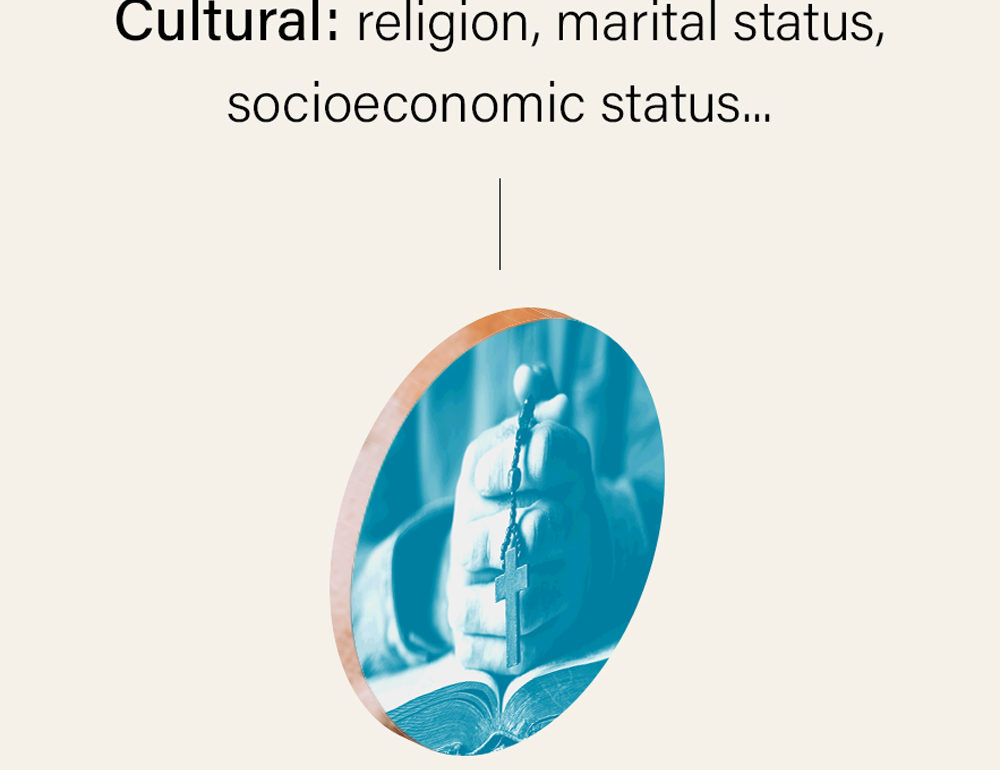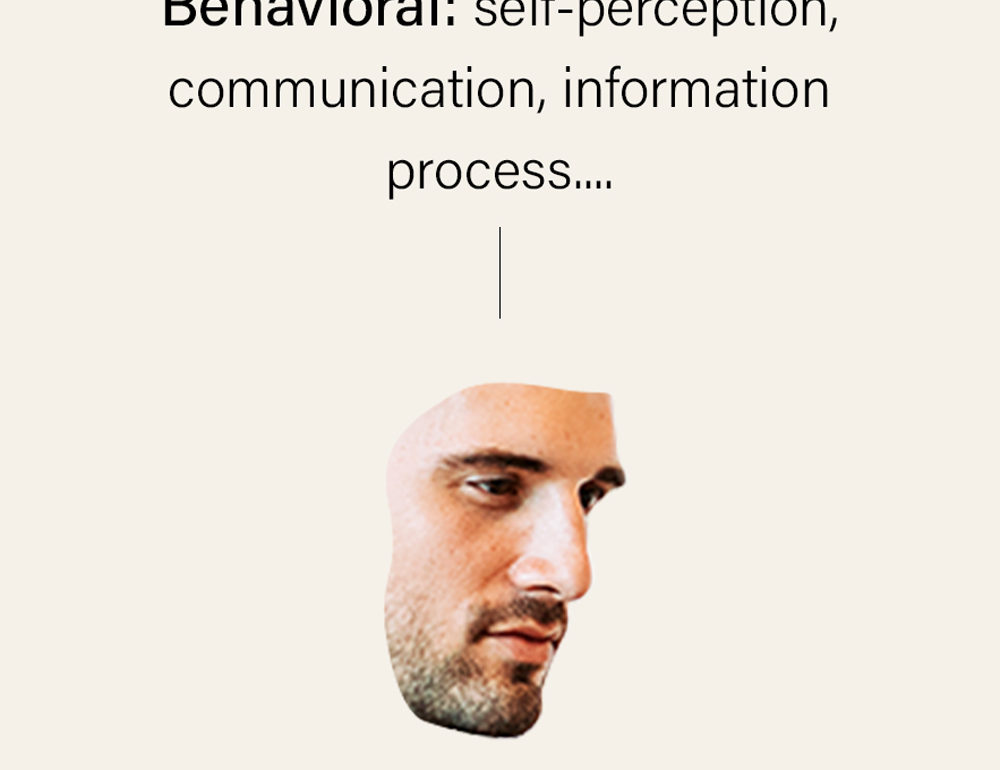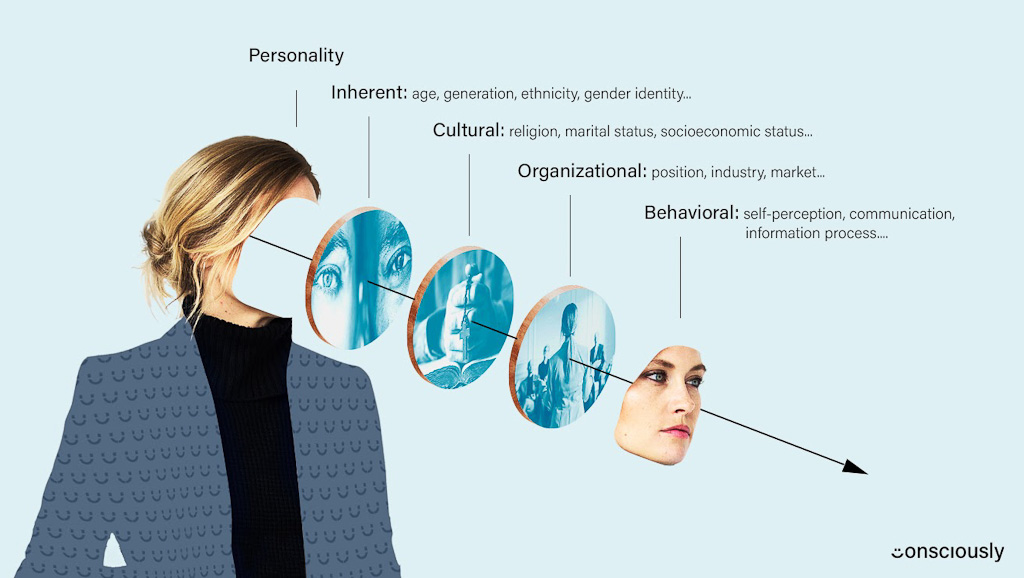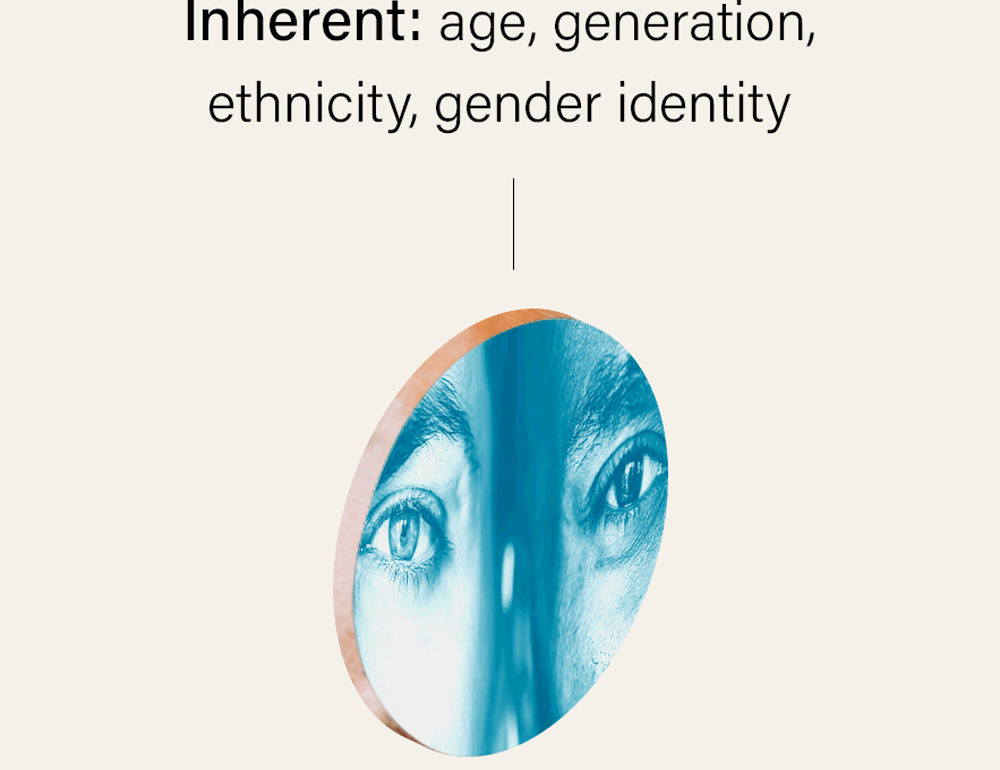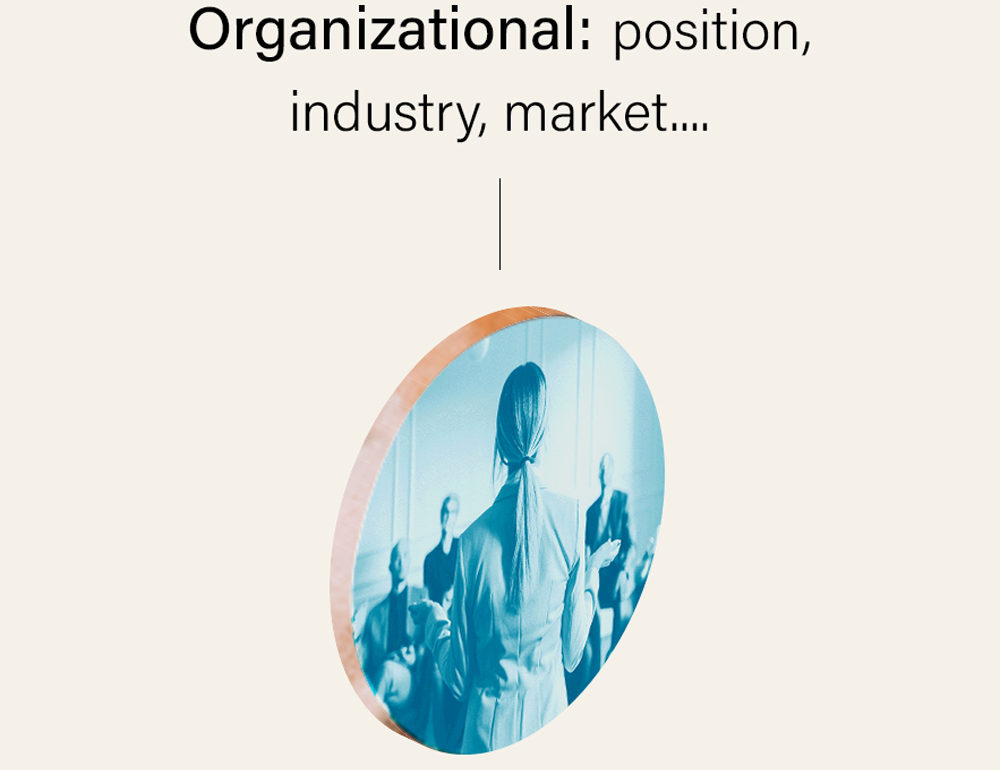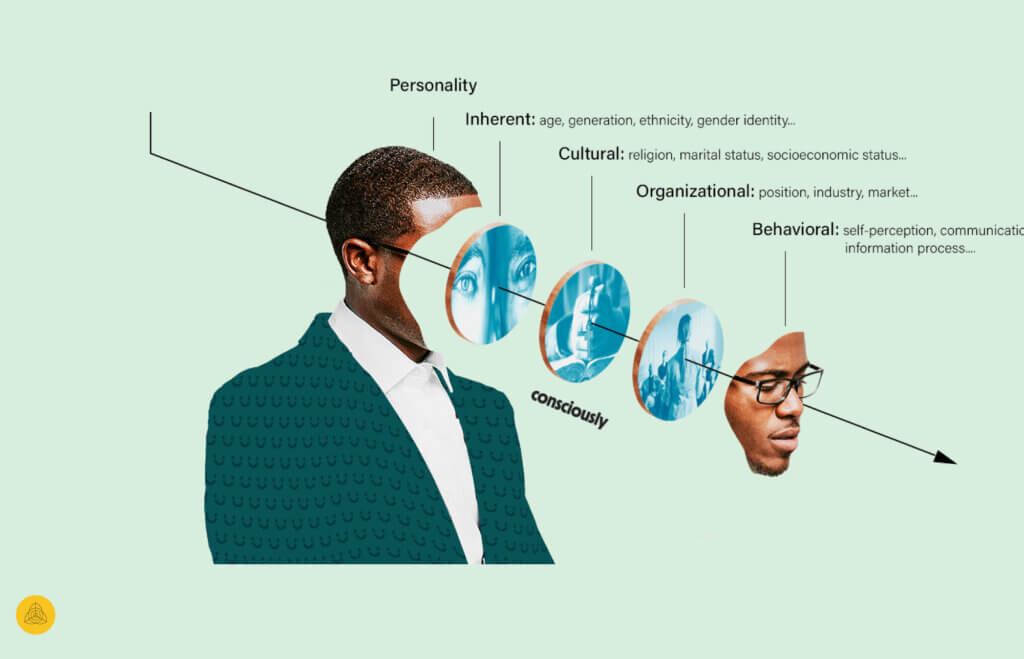How to Mitigate Implicit and Explicit Bias in Your Marketing

Unconscious biases are an inevitable part of life, a result of our background, our society, our experiences and humans’ need to categorize and understand the world.
But they can affect workplaces by unintentionally limiting your talent pool, your employees’ potential and your customer base. They can even impact the bottom line: Companies with the least diverse executive teams were less likely to see better-than-average profits, according to a McKinsey study.
Unconscious biases also affect how you market your business and that’s our focus here. One study found that business and industrial ads on YouTube showed women only 29 percent of the time, with men being featured the rest of the time. Is your company unwittingly falling into these norms, reinforcing stereotypes and alienating customers?
It’s important to address your organization’s biases in order to meet the true needs of the communities you serve and to assure that marketing isn’t riddled with biases that can cause harm, poor values alignment and undesirable outcomes.
So How Do We Fix Unconscious Bias in MARKETING?
Unconscious biases doesn’t have to be permanent. While it may be impossible to completely eradicate these biases, you can take steps to reduce them and their effects on your business and most importantly it’s marketing efforts.
Tips to battle bias in the workplace:
- Collect data on who gets hired and rewarded: Look for patterns among the people your company is hiring, promoting and awarding raises or plum assignments to. Who serves as mentors? Who reaches upper management? Who doesn’t get hired, or gets only part-time or contract work, or leaves after a brief period? Is there unconscious bias at work, either in specific areas or throughout the organization?
- Set diversity goals: With your statistics now in hand, you can see where you’re falling short on diversity and set specific, measurable goals for improvement.
- Make sure your hiring team is diverse: Because people tend to hire employees similar to themselves, a diverse hiring team can help attract a diverse staff.
- Scrutinize your hiring process: Unconscious bias can creep in as early as the job posting. Ads that seek “a digital native” rule out older applicants. Other postings might include boilerplate language like “must be able to lift 25 pounds” that isn’t actually a requirement for the role. Studies show that using words like “competitive” or “dominant” in job descriptions can discourage women from applying for certain positions. Once you have job candidates, examine resumes without looking at the names so you don’t get clues about gender or ethnicity, and consider giving candidates a test to get unbiased information about their skills or knowledge. Ask the same questions of all candidates during the interview process to try to keep unconscious bias out.
- Get employees involved: If your workplace is rife with unconscious bias, some employees certainly have noticed. Whether they speak up or not depends on the culture you create. Leaders must work to create an environment where people feel comfortable raising concerns and pushing for a workplace that is fair, inclusive and diverse. Try surveying your employees anonymously as you go to measure your progress.
- Widen your work circle: Try to work with a more diverse range of people and get to know them individually. This will help to improve your cultural competence and lead to a better understanding of others, as well as enhance your chances for workplace success.
- Offer training: Regular, ongoing unconscious bias training can help you and your company address issues effectively.
How Unconscious Bias Hurts Your Marketing
In modern marketing, an organization’s core value and belief system is central. If unconscious biases are present, they will be revealed to those people who care about the issues. If your language is careless, if your photos show people who are all white, or all have children, or are all thin, you may reveal yourself as an organization that does not truly see or care about its audience.
Your audience wants to see itself in your marketing. This goes beyond gender and race. They want to see people who talk like them, who live like them, who eat the foods they eat. That’s not just because they want representation — it’s because they want to know that you understand and care about their needs. Failing to see your audience can send the message that your product or service is for other people.
A Google and Ipsos study found that more than 70 percent of LGBTQ respondents said they’re more likely to interact with an online ad that authentically represents their sexual orientation.
“It is not enough to put a rainbow on a product and call it a marketing strategy,” Sarah Kate Ellis, president and CEO of GLAAD, says in the study. “Brands need to take the initiative to reflect the world we live in by showcasing the wide range of diverse identities within the LGBTQ community.”
How to Limit Unconscious Bias in Marketing
The solution to unconscious bias begins with learning who your audience is. Market segmentation and audience personas that are based on data, rather than gut instinct and what audience you feel comfortable with, are critical.
Here are more tips for making your marketing diverse:
- Have representation in the room: Avoid an echo chamber by remembering to ask how certain segments of your audience will respond to your marketing materials and by having them in the room with you. What sounds like a can’t-miss campaign could fall apart when looked at from the eyes of a vulnerable audience segment. Bud Light once had to apologize for a tagline that read: “The perfect beer for removing ‘no’ from your vocabulary for the night.” Groups fighting sexual assault, who had spent decades emphasizing that “no means no,” were understandably upset by the messaging. But the fiasco could have been avoided with a little questioning of its premise beforehand because the right people were in the room where it happened.
- Don’t fake it: Audiences today can sense inauthenticity, and they hate it. If your organization truly believes in diversity and inclusion, and practices it, it’s much easier for your message to come across sincerely.
- Make your digital message accessible to people with disabilities: Include transcripts for podcasts or videos. Use alt-text on images so people who can’t see well can still access the content. Use high-contrast colors on websites, and allow people to easily increase the font size. Don’t distinguish options by color only. For more information on making your digital content available to all, see “Web Accessibility: How To Design Websites for Blindness, Deaf, Disability & Dyslexia” from SEO firm Hobo.
- Don’t appropriate someone else’s culture: This can occur when a marketing campaign inappropriately or without acknowledgment adopts the customs or practices of a minority group.
- Make sure all partners are on board: This may involve outside agencies, freelancers or influencers your company works with. It can be more difficult to encourage change among these partners, so careful vetting and hiring in the first place is critical.
A great resource for use both internally and in your marketing is “The Conscious Style Guide” created by Karen Yin. It’s designed “to help writers and editors think critically about using language—including words, portrayals, framing, and representation.”
Diversity Plus Inclusion
Finally, your marketing should demonstrate that your brand values inclusion, as well as diversity.
While diversity involves showing the full extent of your audience in your marketing, inclusion means valuing everyone’s contribution.
“Diversity is any dimension that can be used to differentiate groups and people from one another. In a nutshell, it’s about empowering people by respecting and appreciating what makes them different, in terms of age, gender, ethnicity, religion, disability, sexual orientation, education, and national origin,” writes Global Diversity Practice. “Inclusion is an organisational effort and practices in which different groups or individuals having different backgrounds are culturally and socially accepted and welcomed, and equally treated.”
That means your marketing shouldn’t just demonstrate different kinds of people. It must fully include and welcome them.
To learn more about applying these learnings in your organization, find us on Facebook and Twitter, or drop us a line at hello@weareconsciously.com.

